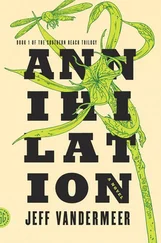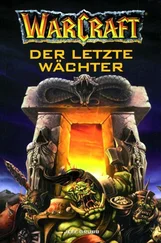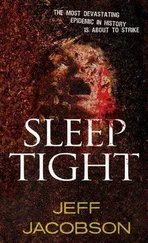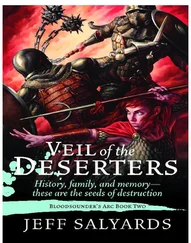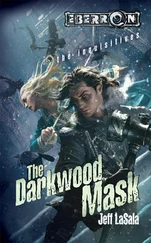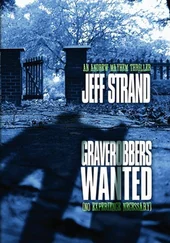Jeff Molofee - NeHe's OpenGL Tutorials
Здесь есть возможность читать онлайн «Jeff Molofee - NeHe's OpenGL Tutorials» весь текст электронной книги совершенно бесплатно (целиком полную версию без сокращений). В некоторых случаях можно слушать аудио, скачать через торрент в формате fb2 и присутствует краткое содержание. Жанр: Программирование, на английском языке. Описание произведения, (предисловие) а так же отзывы посетителей доступны на портале библиотеки ЛибКат.
- Название:NeHe's OpenGL Tutorials
- Автор:
- Жанр:
- Год:неизвестен
- ISBN:нет данных
- Рейтинг книги:3 / 5. Голосов: 1
-
Избранное:Добавить в избранное
- Отзывы:
-
Ваша оценка:
- 60
- 1
- 2
- 3
- 4
- 5
NeHe's OpenGL Tutorials: краткое содержание, описание и аннотация
Предлагаем к чтению аннотацию, описание, краткое содержание или предисловие (зависит от того, что написал сам автор книги «NeHe's OpenGL Tutorials»). Если вы не нашли необходимую информацию о книге — напишите в комментариях, мы постараемся отыскать её.
NeHe's OpenGL Tutorials — читать онлайн бесплатно полную книгу (весь текст) целиком
Ниже представлен текст книги, разбитый по страницам. Система сохранения места последней прочитанной страницы, позволяет с удобством читать онлайн бесплатно книгу «NeHe's OpenGL Tutorials», без необходимости каждый раз заново искать на чём Вы остановились. Поставьте закладку, и сможете в любой момент перейти на страницу, на которой закончили чтение.
Интервал:
Закладка:
{
return 0; // Quit If Window Was Not Created
}
}
Markus Knauer Adds: In the book ("OpenGL Programming Guide: The Official Guide to Learning OpenGL, Release 1", J. Neider, T. Davis, M. Woo, Addison-Wesley, 1993) the following paragraph will clearly explain what NeHe means when he refers to movement by units in OpenGL:
[I mentioned] inches and millimeters — do these really have anything to do with OpenGL? The answer is, in a word, no. The projection and other transformations are inheritly unitless. If you want to think of the near and far clipping planes as located at 1.0 and 20.0 meters, inches, kilometers, or leagues, it's up to you. The only rule is that you have to use consistent unit of measurement.
In this tutorial I have tried to explain in as much detail, every step involved in drawing polygons, and quads on the screen using OpenGL. If you have comments or questions please email me. If you feel I have incorrectly commented something or that the code could be done better in some sections, please let me know. I want to make the best OpenGL tutorials I can. I'm interested in hearing your feedback.
Jeff Molofee (NeHe)* DOWNLOAD Visual C++Code For This Lesson.
* DOWNLOAD ASMCode For This Lesson. (Conversion by Foolman)
* DOWNLOAD Borland C++ Builder 5.0Code For This Lesson. (Conversion by Neil Flynn)
* DOWNLOAD Code Warrior 5Code For This Lesson. (Conversion by David Dolinar)
* DOWNLOAD CygwinCode For This Lesson. (Conversion by Stephan Ferraro)
* DOWNLOAD DelphiCode For This Lesson. (Conversion by Peter De Jaegher)
* DOWNLOAD Game GLUTCode For This Lesson. (Conversion by Milikas Anastasios)
* DOWNLOAD GLUTCode For This Lesson. (Conversion by Andy Restad)
* DOWNLOAD IrixCode For This Lesson. (Conversion by Lakmal Gunasekara)
* DOWNLOAD JavaCode For This Lesson. (Conversion by Jeff Kirby)
* DOWNLOAD Jedi-SDLCode For This Lesson. (Conversion by Dominique Louis)
* DOWNLOAD LinuxCode For This Lesson. (Conversion by Richard Campbell)
* DOWNLOAD Linux/GLXCode For This Lesson. (Conversion by Mihael Vrbanec)
* DOWNLOAD Linux/SDLCode For This Lesson. (Conversion by Ti Leggett)
* DOWNLOAD Mac OSCode For This Lesson. (Conversion by Anthony Parker)
* DOWNLOAD Mac OS X/CocoaCode For This Lesson. (Conversion by Bryan Blackburn)
* DOWNLOAD MASMCode For This Lesson. (Conversion by Nico (Scalp))
* DOWNLOAD Power BasicCode For This Lesson. (Conversion by Angus Law)
* DOWNLOAD PythonCode For This Lesson. (Conversion by John)
* DOWNLOAD SolarisCode For This Lesson. (Conversion by Lakmal Gunasekara)
* DOWNLOAD Visual BasicCode For This Lesson. (Conversion by Ross Dawson)
* DOWNLOAD Visual FortranCode For This Lesson. (Conversion by Jean-Philippe Perois)
Lesson 03
In the last tutorial I taught you how to display Triangles and Quads on the screen. In this tutorial I will teach you how to add 2 different types of coloring to the triangle and quad. Flat coloring will make the quad one solid color. Smooth coloring will blend the 3 colors specified at each point (vertex) of the triangle together, creating a nice blend of colors.
Using the code from the last tutorial, we will be adding to the DrawGLScene procedure. I will rewrite the entire procedure below, so if you plan to modify the last lesson, you can replace the DrawGLScene procedure with the code below, or just add code to the DrawGLScene procedure that is not already in the last tutorial.
int DrawGLScene(GLvoid) // Here's Where We Do All The Drawing
{
glClear(GL_COLOR_BUFFER_BIT | GL_DEPTH_BUFFER_BIT); // Clear The Screen And The Depth Buffer
glLoadIdentity(); // Reset The Current Modelview Matrix
glTranslatef(-1.5f,0.0f,-6.0f); // Left 1.5 Then Into Screen Six Units
glBegin(GL_TRIANGLES); // Begin Drawing Triangles
If you remember from the last tutorial, this is the section of code to draw the triangle on the left half of the screen. The next line of code will be the first time we use the command glColor3f(r,g,b). The three parameters in the brackets are red, green and blue intensity values. The values can be from 0.0f to 1.0f. It works the same way as the color values we use to clear the background of the screen.
We are setting the color to red (full red intensity, no green, no blue). The line of code right after that is the first vertex (the top of the triangle), and will be drawn using the current color which is red. Anything we draw from now on will be red until we change the color to something other than red.
glColor3f(1.0f,0.0f,0.0f); // Set The Color To Red
glVertex3f( 0.0f, 1.0f, 0.0f); // Move Up One Unit From Center (Top Point)
We've placed the first vertex on the screen, setting it's color to red. Now before we set the second vertex we'll change the color to green. That way the second vertex which is the left corner of the triangle will be set to green.
glColor3f(0.0f,1.0f,0.0f); // Set The Color To Green
glVertex3f(-1.0f,-1.0f, 0.0f); // Left And Down One Unit (Bottom Left)
Now we're on the third and final vertex. Just before we draw it, we set the color to blue. This will be the right corner of the triangle. As soon as the glEnd() command is issued, the polygon will be filled in. But because it has a different color at each vertex, rather than one solid color throughout, the color will spread out from each corner, eventually meeting in the middle, where the colors will blend together. This is smooth coloring.
glColor3f(0.0f,0.0f,1.0f); // Set The Color To Blue
glVertex3f( 1.0f,-1.0f, 0.0f); // Right And Down One Unit (Bottom Right)
glEnd(); // Done Drawing A Triangle
glTranslatef(3.0f,0.0f,0.0f); // From Right Point Move 3 Units Right
Now we will draw a solid blue colored square. It's important to remember that anything drawn after the color has been set will be drawn in that color. Every project you create down the road will use coloring in one way or another. Even in scenes where everything is texture mapped, glColor3f can still be used to tint the color of textures, etc. More on that later.
So to draw our square all one color, all we have to do is set the color once to a color we like (blue in this example), then draw the square. The color blue will be used for each vertex because we're not telling OpenGL to change the color at each vertex. The final result… a solid blue square. Again, the square (quad) is drawn in a clockwise order meaning we start off looking at the back of the quad.
glColor3f(0.5f,0.5f,1.0f); // Set The Color To Blue One Time Only
glBegin(GL_QUADS); // Start Drawing Quads
glVertex3f(-1.0f, 1.0f, 0.0f); // Left And Up 1 Unit (Top Left)
glVertex3f( 1.0f, 1.0f, 0.0f); // Right And Up 1 Unit (Top Right)
glVertex3f( 1.0f,-1.0f, 0.0f); // Right And Down One Unit (Bottom Right)
glVertex3f(-1.0f,-1.0f, 0.0f); // Left And Down One Unit (Bottom Left)
glEnd(); // Done Drawing A Quad
return TRUE; // Keep Going
}
Finally change the code to toggle window / fullscreen mode so that the title at the top of the window is proper.
if (keys[VK_F1]) // Is F1 Being Pressed?
{
keys[VK_F1]=FALSE; // If So Make Key FALSE
KillGLWindow(); // Kill Our Current Window
fullscreen=!fullscreen; // Toggle Fullscreen / Windowed Mode
// Recreate Our OpenGL Window ( Modified )
Интервал:
Закладка:
Похожие книги на «NeHe's OpenGL Tutorials»
Представляем Вашему вниманию похожие книги на «NeHe's OpenGL Tutorials» списком для выбора. Мы отобрали схожую по названию и смыслу литературу в надежде предоставить читателям больше вариантов отыскать новые, интересные, ещё непрочитанные произведения.
Обсуждение, отзывы о книге «NeHe's OpenGL Tutorials» и просто собственные мнения читателей. Оставьте ваши комментарии, напишите, что Вы думаете о произведении, его смысле или главных героях. Укажите что конкретно понравилось, а что нет, и почему Вы так считаете.

